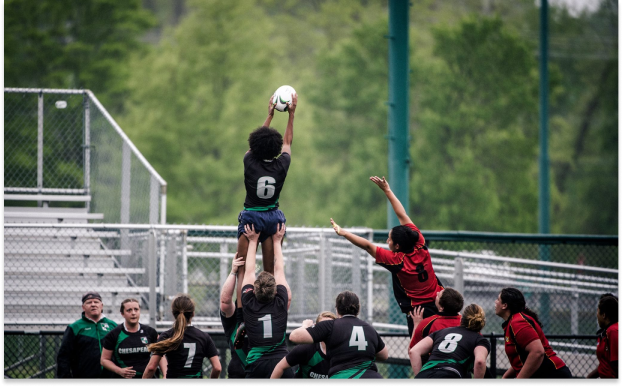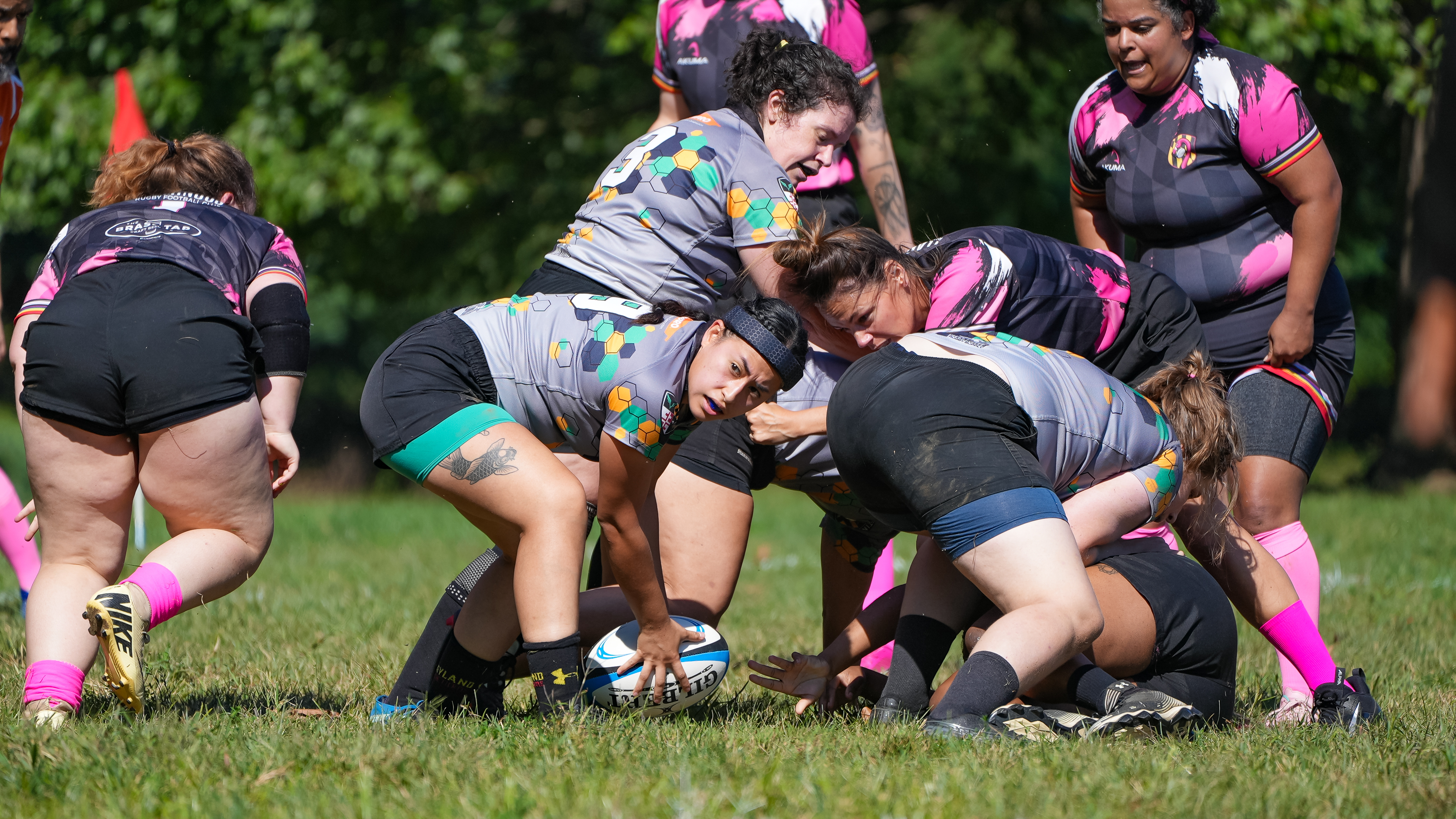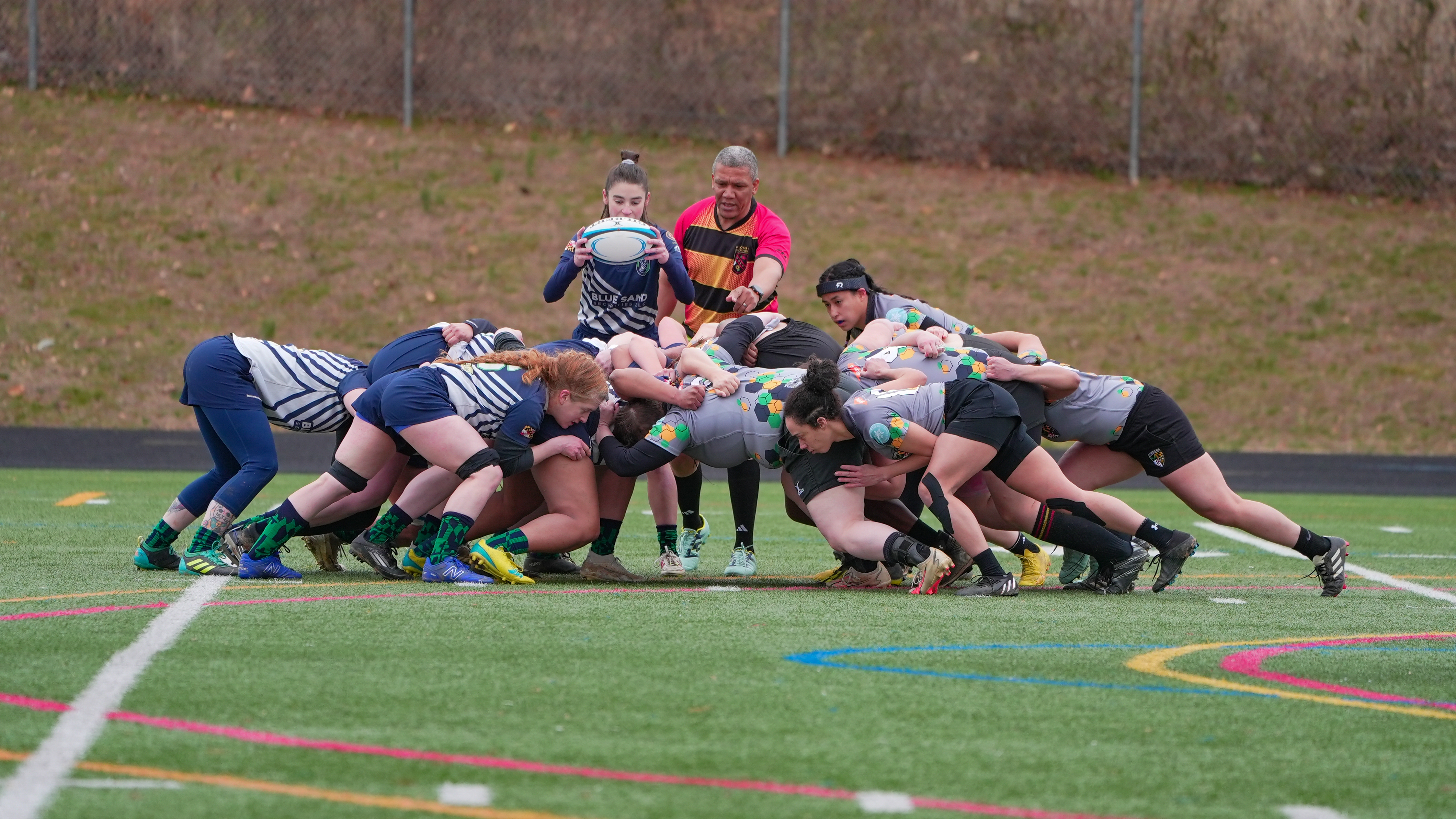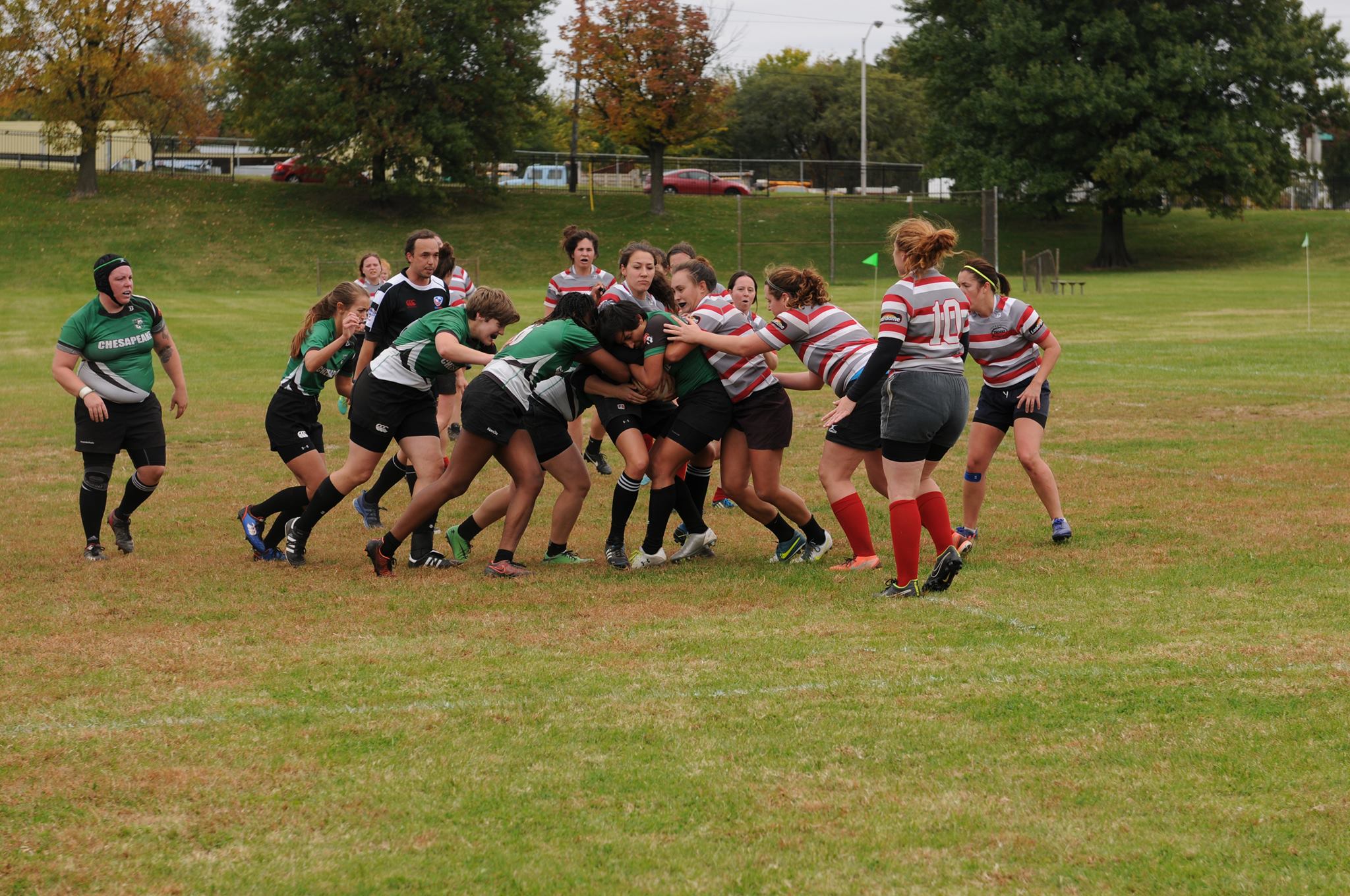Rugby as a sport is said to originate in 1823. The idea for the sport began after a school boy at Rugby School in Warwickshire, England picked the ball up in a game of soccer and ran with it to score a goal. There is little evidence to support this origin story but the legend of it persists to this day.
Rugby is similar in terms to American football. At Rugby’s core it involves running the ball to an end of the field with uprights to score points. The ball can also be kicked by the scoring team through the uprights for more points. Players are tackled in order to gain control of the ball and the ball itself is an oblong elliptical shape.
That however is where most of the similarities end. Rugby players only tackle low, wear lighter protection than football, and can only pass the ball backwards to other teammates. Play is also for the most part continuous with stoppages occuring when fouls are made, the ball is knocked out of bounds, a score occurs, or posession of the ball comes in to question. Players can then form scrums, lineouts, or perform pentalty kicks to reset play.





